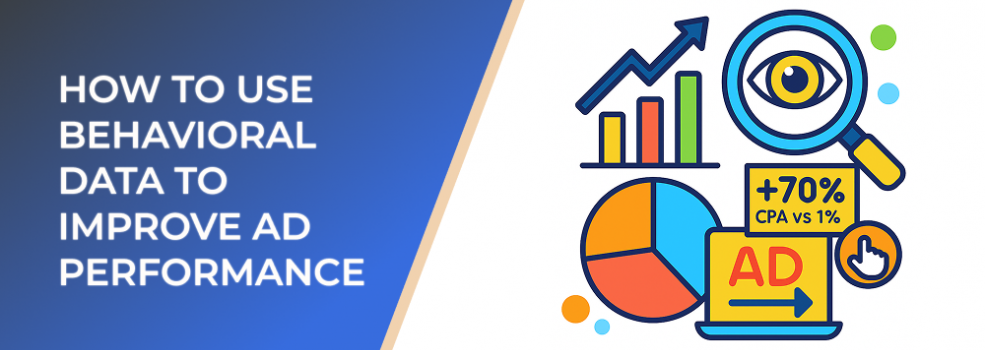This article reveals how to collect, interpret, and apply audience behavior insights using LeadEnforce tools to enhance targeting, personalization, and overall ad performance.
What Is Behavioral Data?
Behavioral data refers to information gathered from users’ actions and interactions online—such as website visits, content engagement, purchase activity, and ad clicks. Unlike demographic or interest-based data, behavioral data reflects what people actually do, not just who they are or what they like.
Understanding this data helps marketers deliver more relevant ads, optimize budgets, and improve user experience. According to Salesforce, 72% of consumers say they only engage with personalized marketing messages, highlighting the importance of behavior-driven targeting.
Why Behavioral Data Matters for Ad Performance
Traditional targeting methods based on demographics or broad interests are becoming less effective. Behavioral data provides a deeper layer of context—allowing advertisers to understand the intent and readiness of each user.
Statistic: Marketers using behavioral insights report a 30% increase in engagement rates and a 25% improvement in conversion rates compared to campaigns relying on basic audience segmentation.
By leveraging this data, advertisers can:
-
Identify high-value audience segments.
-
Deliver personalized ads at the right time.
-
Predict future actions and optimize ad placements.
Types of Behavioral Data to Track
To maximize ad performance, focus on collecting and analyzing these key behavioral metrics:
-
Website Behavior: Page visits, time spent, click paths, and exit rates help determine user intent and interest levels.
-
Engagement Data: Likes, comments, shares, and saves provide insight into what type of content resonates most.
-
Purchase and Conversion Data: Reveals which actions directly lead to sales or sign-ups.
-
Ad Interaction History: Tracks how users respond to different ad creatives, formats, and placements.
Statistic: Businesses that integrate multi-source behavioral data into their ad strategy achieve up to 45% higher ROI than those using single-source data.
How to Use Behavioral Data to Optimize Campaigns
-
Segment Audiences by Behavior
Use behavioral patterns to group users based on activity. For example, separate frequent site visitors from first-time users, or segment based on engagement frequency. -
Refine Targeting and Timing
Deliver ads when users are most active or likely to convert. LeadEnforce’s intelligent scheduling tools can automate these optimizations for better reach. -
Personalize Creative and Messaging
Tailor ad copy, visuals, and calls to action based on prior user behavior. For instance, show dynamic product recommendations to repeat visitors. -
Retarget High-Intent Users
Create retargeting lists of users who viewed key pages or added items to their carts but didn’t complete a purchase. -
Use Predictive Analytics
Platforms like LeadEnforce use AI to forecast user actions, allowing you to preemptively deliver ads to those most likely to convert.
Statistic: Advertisers using predictive models based on behavioral data reduce acquisition costs by up to 35% while increasing conversion rates by 20%.
Measuring the Impact of Behavioral Optimization
To ensure your behavioral strategy is driving results, monitor these key performance indicators (KPIs):
-
Click-Through Rate (CTR) to measure engagement.
-
Conversion Rate (CR) to track goal completions.
-
Cost per Acquisition (CPA) to gauge efficiency.
-
Customer Lifetime Value (CLV) to assess long-term impact.
Using LeadEnforce’s analytics dashboard, marketers can visualize user journeys, uncover high-performing audience segments, and adjust targeting in real-time.
Statistic: Companies that continuously analyze behavioral data achieve 28% more efficient ad spend and 2.3x higher customer retention.
Final Thoughts
Behavioral data is reshaping how advertisers understand and reach their audiences. By analyzing user actions and applying these insights through platforms like LeadEnforce, brands can craft smarter, more effective ad campaigns that deliver real results.
Focusing on user behavior isn’t just about data—it’s about understanding what truly drives customer decisions and turning those insights into measurable growth.
You may also like:

